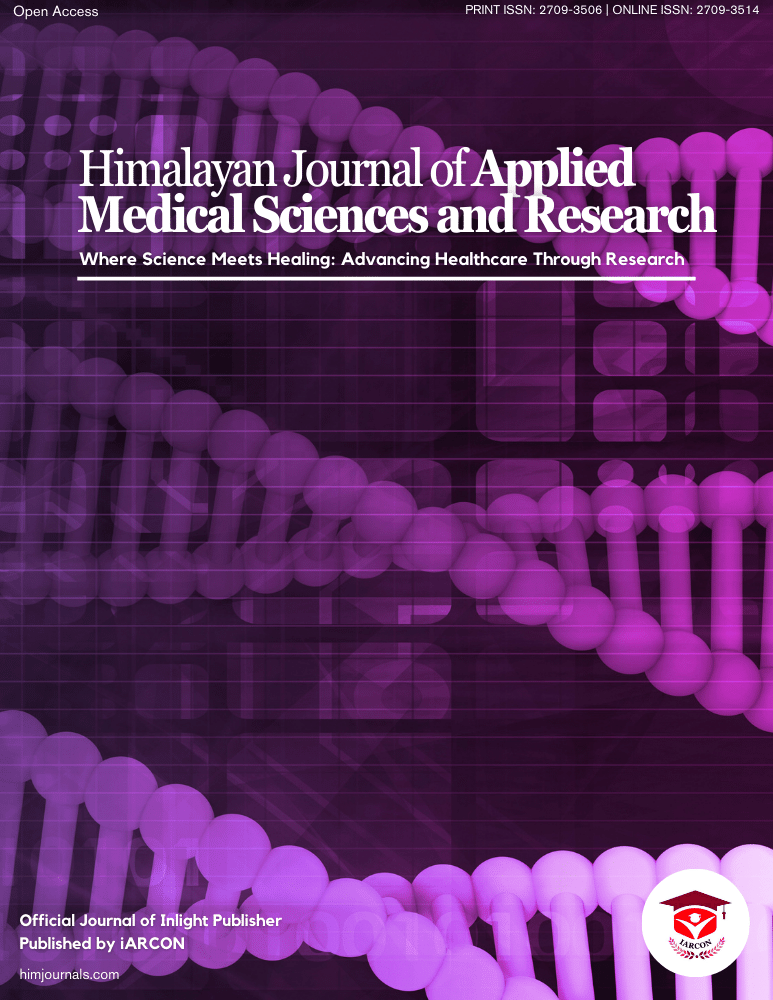Prestinaci, Francesca, Paola Pezzotti, and Alessandra Pantosti. "Antimicrobial Resistance: A Global Multifaceted Phenomenon." Pathogens and Global Health, vol. 109, no. 7, 2015, pp. 309-318. DOI: 10.1179/2047773215Y.0000000030.
Tang, K. W. K., B. C. Millar, and J. E. Moore. "Antimicrobial Resistance (AMR)." British Journal of Biomedical Science, 28 June 2023, vol. 80, no. 1, 2023, p. 11387. DOI: 10.1080/09674845.2023.2219465.
Gajic, Ivana, et al. "Antimicrobial Susceptibility Testing: A Comprehensive Review of Currently Used Methods." Antibiotics, vol. 11, no. 4, 2022, pp. 427. DOI: 10.3390/antibiotics11040427.
Vasala, A., V. P. Hytönen, and O. H. Laitinen. "Modern Tools for Rapid Diagnostics of Antimicrobial Resistance." Frontiers in Cellular and Infection Microbiology, vol. 10, 2020, p. 308. DOI: 10.3389/fcimb.2020.00308.
Khan, Z. A., M. F. Siddiqui, and S. Park. "Current and Emerging Methods of Antibiotic Susceptibility Testing." Diagnostics, vol. 9, no. 2, 2019, p. 49. DOI: 10.3390/diagnostics9020049.
Salam, M. A., M. Y. Al-Amin, J. S. Pawar, N. Akhter, and I. B. Lucy. "Conventional Methods and Future Trends in Antimicrobial Susceptibility Testing." Saudi Journal of Biological Sciences, vol. 30, no. 3, Mar. 2023, p. 103582. DOI: 10.1016/j.sjbs.2023.103582.
Balouiri, M., M. Sadiki, and S. K. Ibnsouda. "Methods for In Vitro Evaluating Antimicrobial Activity: A Review." Journal of Pharmaceutical Analysis, vol. 6, no. 2, Apr. 2016, pp. 71-79. DOI: 10.1016/j.jpha.2015.11.005.
Vasala, A., V. P. Hytönen, and O. H. Laitinen. "Modern Tools for Rapid Diagnostics of Antimicrobial Resistance." Frontiers in Cellular and Infection Microbiology, vol. 10, 2020, p. 308. DOI: 10.3389/fcimb.2020.00308.
Kowalska-Krochmal, B., and R. Dudek-Wicher. "The Minimum Inhibitory Concentration of Antibiotics: Methods, Interpretation, Clinical Relevance." Pathogens, vol. 10, no. 2, 2021, p. 165. DOI: 10.3390/pathogens10020165.
Poliak, M. S., and I. A. Tsvetkova. "[Some Factors Influencing the Efficiency of Disk-Diffusion Test to Determine the Antibiotic Sensitivity of Microorganisms]." Klinicheskaya Laboratornaya Diagnostika, vol. 5, May 2007, pp. 36-39. PMID: 17580672.
Nassar, M. S. M., W. A. Hazzah, and W. M. K. Bakr. "Evaluation of Antibiotic Susceptibility Test Results: How Guilty a Laboratory Could Be?" Journal of the Egyptian Public Health Association, vol. 94, no. 1, 2019, p. 4. DOI: 10.1186/s42506-019-0006-7.
Khalili, H., R. Soltani, S. Negahban, A. Abdollahi, and K. Gholami. "Reliability of Disk Diffusion Test Results for the Antimicrobial Susceptibility Testing of Nosocomial Gram-Positive Microorganisms: Is E-Test Method Better?" Iranian Journal of Pharmaceutical Research, vol. 11, no. 2, Spring 2012, pp. 559-563. DOI: 10.22037/ijpr.2012.597.
Mercer, D. K., M. D. Torres, S. S. Duay, et al. "Antimicrobial Susceptibility Testing of Antimicrobial Peptides to Better Predict Efficacy." Frontiers in Cellular and Infection Microbiology, vol. 10, 2020, p. 326. DOI: 10.3389/fcimb.2020.00326.
Biswas, J., K. P. Appasami, H. Gautam, et al. "Tick-Tock, Beat the Clock: Comparative Analysis of Disc Diffusion Testing with 6-, 10-, and 24-h Growth for Accelerated Antimicrobial Susceptibility Testing and Antimicrobial Stewardship." European Journal of Clinical Microbiology & Infectious Diseases, vol. 42, no. 8, Aug. 2023, pp. 929-943. DOI: 10.1007/s10096-023-04987-1.
"Stokes Disc Diffusion Method." Microbe Online, 27 Feb. 2024, www.microbeonline.com/stokes-disc-diffusion-method-principle-procedure-interpretation-results/. Accessed 27 Feb. 2024.
Coorevits, L., J. Boelens, and G. Claeys. "Direct Susceptibility Testing by Disk Diffusion on Clinical Samples: A Rapid and Accurate Tool for Antibiotic Stewardship." European Journal of Clinical Microbiology & Infectious Diseases, vol. 34, no. 6, June 2015, pp. 1207-1212. DOI: 10.1007/s10096-015-2382-1.
Baranova, A. A., A. P. Tyurin, V. A. Korshun, and V. A. Alferova. "Sensing of Antibiotic–Bacteria Interactions." Antibiotics, vol. 12, no. 8, 2023, p. 1340. DOI: 10.3390/antibiotics12081340.
Feng, J., R. Yee, S. Zhang, L. Tian, W. Shi, W. H. Zhang, and Y. Zhang. "A Rapid Growth-Independent Antibiotic Resistance Detection Test by SYBR Green/Propidium Iodide Viability Assay." Frontiers in Medicine, vol. 5, 3 May 2018, p. 127. DOI: 10.3389/fmed.2018.00127.
Gautam, V., L. Singhal, S. Arora, C. Jha, and P. Ray. "Reliability of Kirby-Bauer Disk Diffusion Method for Detecting Carbapenem Resistance in Acinetobacter baumannii-calcoaceticus Complex Isolates." Antimicrobial Agents and Chemotherapy, vol. 57, no. 4, Apr. 2013, pp. 2003-2004. DOI: 10.1128/AAC.01943-12.
Berlanda, S. F., M. Breitfeld, C. L. Dietsche, and P. S. Dittrich. "Recent Advances in Microfluidic Technology for Bioanalysis and Diagnostics." Analytical Chemistry, vol. 93, no. 1, 2021, pp. 311-331. DOI: 10.1021/acs.analchem.0c04871.
Yamin, D., V. Uskoković, A. M. Wakil, et al. "Current and Future Technologies for the Detection of Antibiotic-Resistant Bacteria." Diagnostics, vol. 13, no. 20, 18 Oct. 2023, p. 3246. DOI: 10.3390/diagnostics13203246.
Li, Y., X. Yang, and W. Zhao. "Emerging Microtechnologies and Automated Systems for Rapid Bacterial Identification and Antibiotic Susceptibility Testing." SLAS Technology, vol. 22, no. 6, Dec. 2017, pp. 585-608. DOI: 10.1177/2472630317738755.
Wang, Jiao, Vivek Chavda, Riddhi Prajapati, et al. "An Amalgamation of Bioinformatics and Artificial Intelligence for COVID-19 Management: From Discovery to Clinic." Current Research in Biotechnology, vol. 6, 2023, p. 100159. DOI: 10.1016/j.crbiot.2023.100159.
Harris, M. "Machine Learning and Artificial Intelligence for Pathogen Identification and Antibiotic Resistance Detection: Advancing Diagnostics for Urinary Tract Infections." BioMed, vol. 3, no. 2, 2023, pp. 246-255. DOI: 10.3390/biomed3020017.
Sirkeck, Assem, Vineet Bhardwaj, and Kamal Kant Kalia. "Antimicrobial Sensitivity Testing: Its Importance, Types, Methods and Interpretations." International Academic Research Journal of Clinical Research, vol. 2, no. 4, 2022, pp. 5-12. DOI: 10.46654/iarjcr.2022.v02i04.002.


